Women on the Frontline of Climate Change
WOMEN IN RURAL AFRICA ARE ON THE FRONTLINE OF THE FIGHT TO COMBAT CHANGING CLIMATE.
As the producers of much of the food grown on small farms, Africa’s women farmers are locked in a struggle to provide for their families in the face of drier, hotter and more unpredictable weather conditions.
But Africa’s women are resourceful, and are employing methods that allow them to mitigate the effects of global heating.
Although they are the people being hit hardest – despite being least responsible for this crisis – women farmers are evolving, adapting and changing the way that they farm – and ensuring that there is a future for food production in Africa.
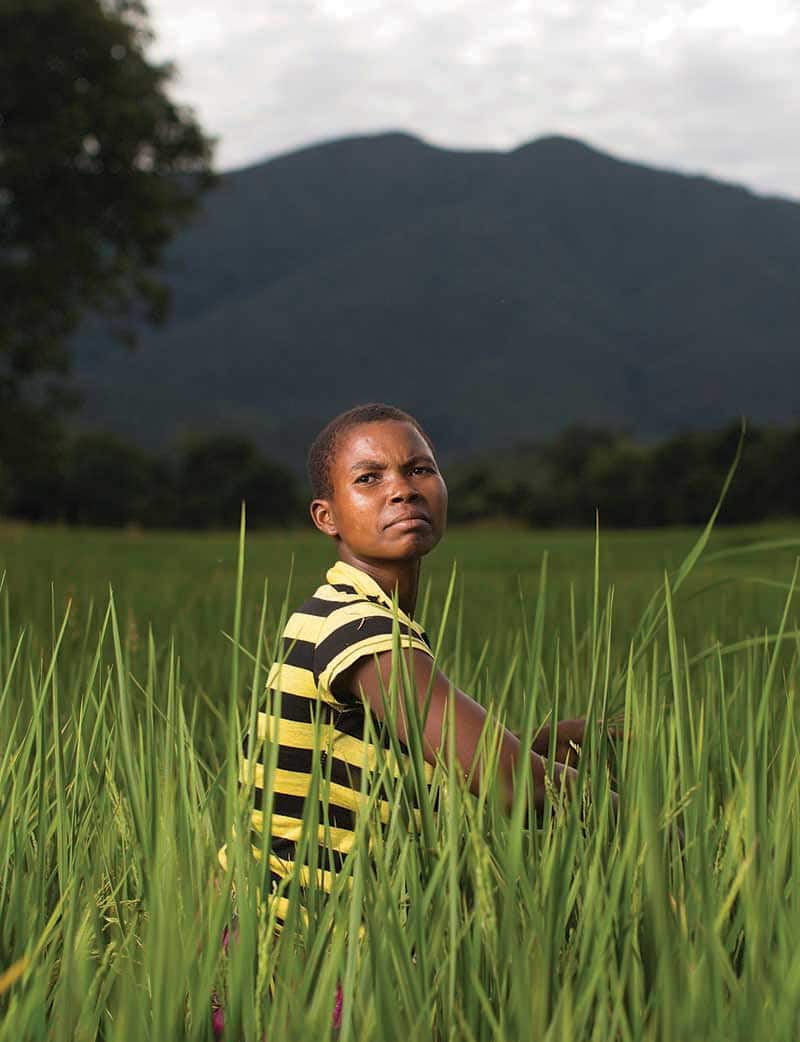
UNTAPPING THE POTENTIAL MALIDADI - MALAWI
Climate change is leading to increasingly erratic rainfall across Africa. To increase food production and meet the needs of a growing population, better irrigation is essential. Today, less than 4% of Africa’s agricultural land is irrigated. This compares to 30% in Europe. Almost a quarter of the total value of Africa’s agricultural output is produced on irrigated land, confirming the potential that the land has to grow more.
Malidadi Chilongo grows rice in an irrigated field in Northern Malawi. Using improved irrigation techniques, she is already seeing the impact on the quality and quantity of her harvest. Hugely reliant on agriculture, Malawi is one of the most vulnerable countries in the world to climate change.
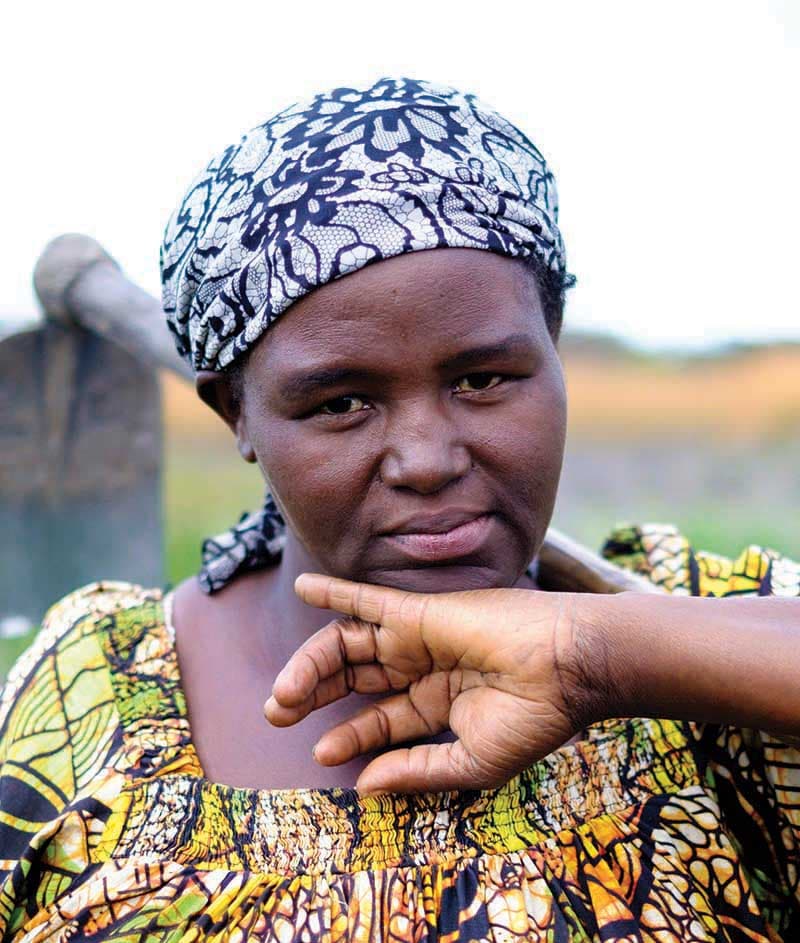
THE NEW NORMAL MALEYA - ZAMBIA
Leya Kwezira lives with her husband and young family at Mabwera, a refugee camp close to Zambia’s border with Democratic Republic of Congo. It has been her home since she fled ethnic violence in DRC more than 25 years ago.
Leya grows crops on a small plot, but she can’t count on the rains. Drought has resulted in crop failure, while prolonged rains have caused her crops to rot in the field before they could be harvested. Farmers in Zambia not only face a long, dry season, but unpredictable rains have left them unsure when they should plant. They are asking, will the rains return to normal or is this the new normal? Across Africa, millions of farmers are asking the same question.
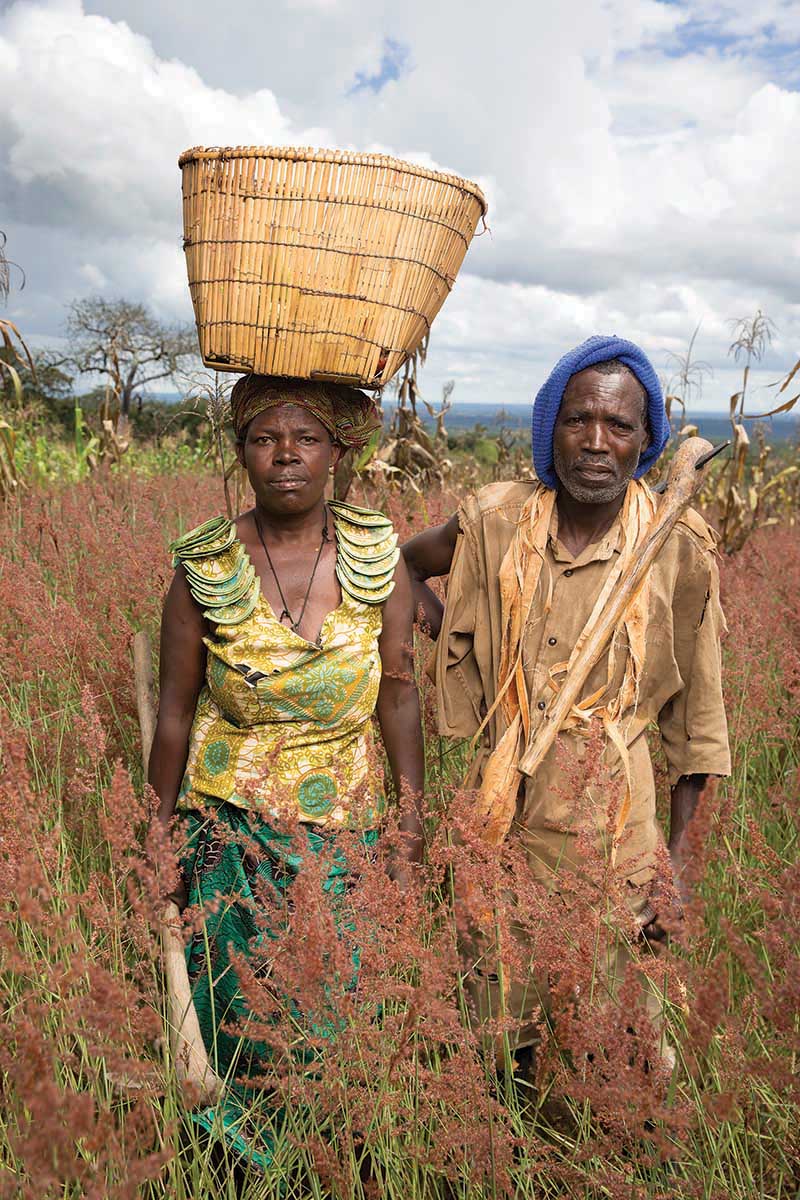
GAMBLING ON THE SEASONS ELIZABETH & SHOWTHEM - ZAMBIA
Climate change is not just about droughts and prolonged dry spells; intense rainfall, changing seasonal patterns and floods are just as likely to impact food production in Africa. It was exactly this concern about unseasonably heavy rain that led Elizabeth and Showthem Sikombe to harvest their maize crop a month earlier than tradition dictated.
Their action saved much of their crop from ruin, but the couple must now make their harvested food last a month longer - a difficult order with eight children and grandchildren to feed. Like their neighbours, Elizabeth and Showthem are left to gamble on whether the rains will come early or late. Planting too early could see next season’s crops rotting in the ground; too late and the crops could dry out.
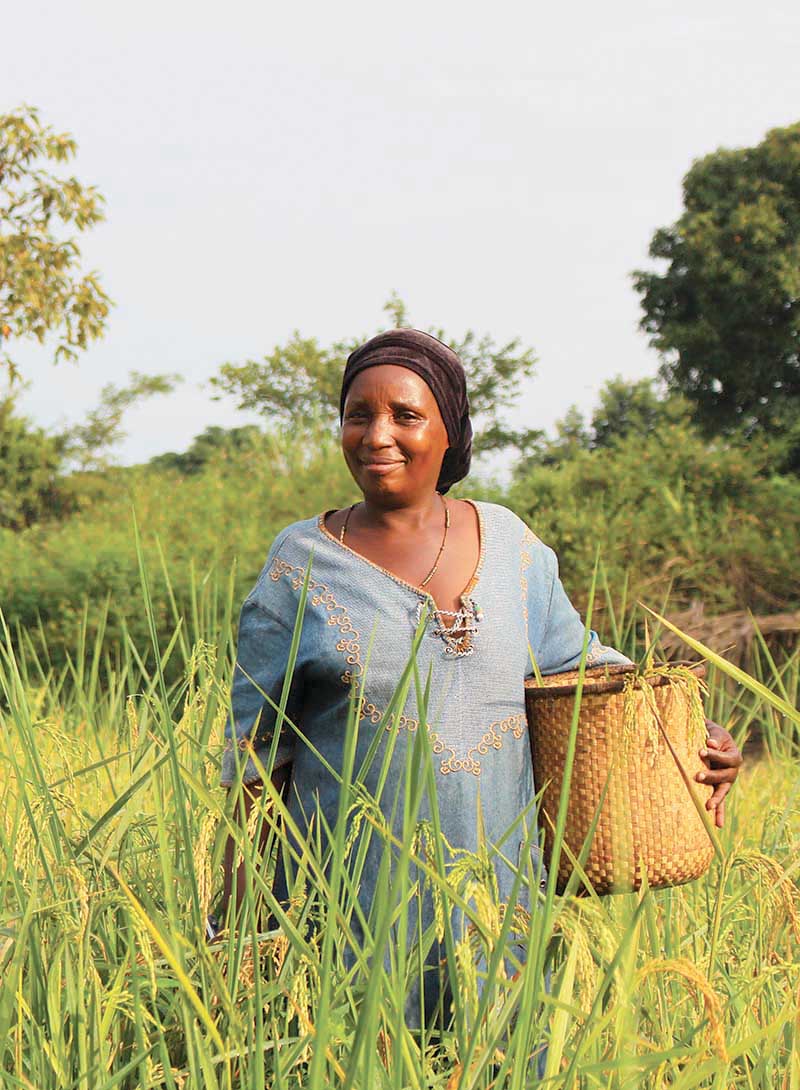
SEEDS OF SUCCESS FLORA - UGANDA
For farmers worldwide, no matter the size of farm, everything starts with the humble seed. In Africa, scarcity of supply and high costs of buying quality seed means that most small scale farmers rely on using seed they have saved themselves, the previous year. This process often means that millions are growing from weaker strains, and are missing out on improved new varieties that can mature early, are more robust, and can mitigate some of the effects of climate change.
We’re not talking about GM here - just the appliance of science. With improved quality seed, farmers can double and triple their yield in a single harvest. Ugandan Flora Nyirangaba recently bought improved rice seeds from a reputable seller. In just one season Flora harvested an extra 10 bags.
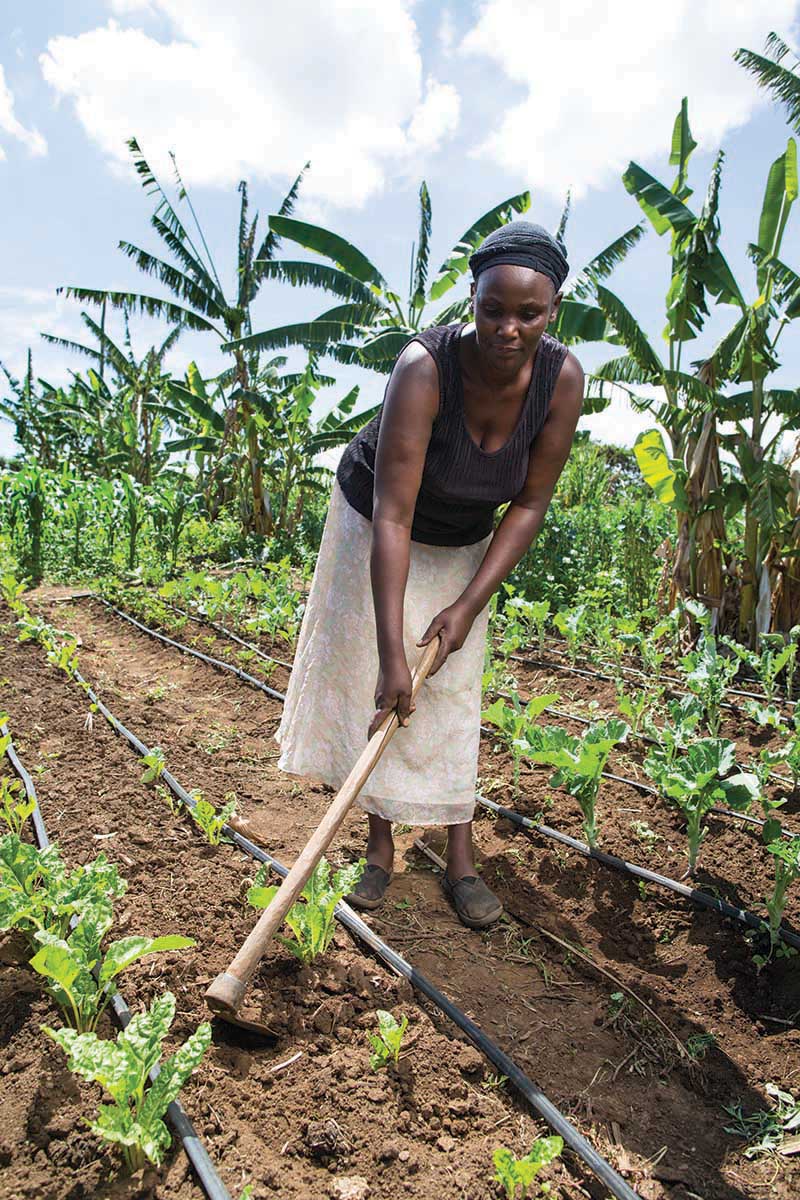
WHERE EVERY DROP COUNTS JULIA - KENYA
Efficient crop irrigation systems that make every drop count are becoming increasingly important to small-scale farmers like Julia Gitari, who farms a small vegetable garden in Western Kenya.
Julia harvests the water that she can gather in the rainy season, storing it in large oil drums. And then, during dry periods she uses a network or irrigation pipes that have small perforations to apply drops of water directly to the point where she has planted her garden. This ‘drip irrigation’ system ensures that she can get the most that is possible from the scarce water available to her. It allows her to grow onions cabbage and other vegetable crops that she can use for home consumption, and to sell.

QUEEN CASSAVA MARY - KENYA
In hot, dry weather conditions, cassava is king... or should that be queen! A staple food in Africa and worldwide the base diet for more than 750 million people, it’s the second greatest source of energy after maize and a consistent source of income for farmers, even under tough environmental conditions.
Cassava is also one of the most drought-tolerant crops in the world, capable also of growing on marginal land. With our world heating up, resilient cassava may become even more important. Mary Auma Otieno from Nyabera village in Homa Bay, Kenya, is one of 28,000 small-scale farmers who are being supported to grow, process and trade cassava as part of a scheme that is actively promoting the crop for its resilient qualities.
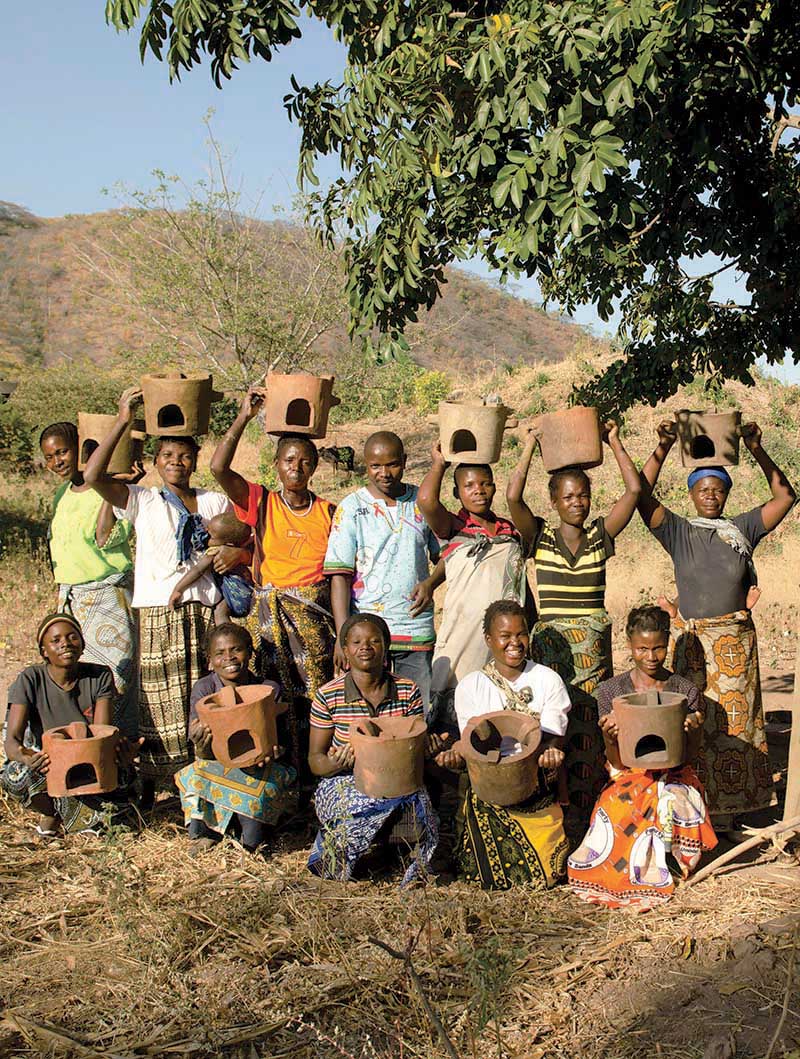
EFFICIENT ENERGY TIWONGE STOVEMAKERS - MALAWI
Close to 90% of the population in sub-Saharan Africa cook with charcoal or wood over open fires. Fuel-efficient stoves can reduce the amount of biomass in the cooking process by anywhere between 30 - 60%. For households this means a lot less money spent on buying fuel, and countless hours and effort spent collecting wood to burn. Environmentally it means less polluting smoke being released into the atmosphere and less deforestation.
The Tiwonge Stove Production Club in Northern Malawi have stablished a business producing and selling fuel-efficient stoves to his neighbours. Made with clay and fashioned using a simple mould, the group see real potential in the business, as more and more Malawians learn about the benefits of the technology
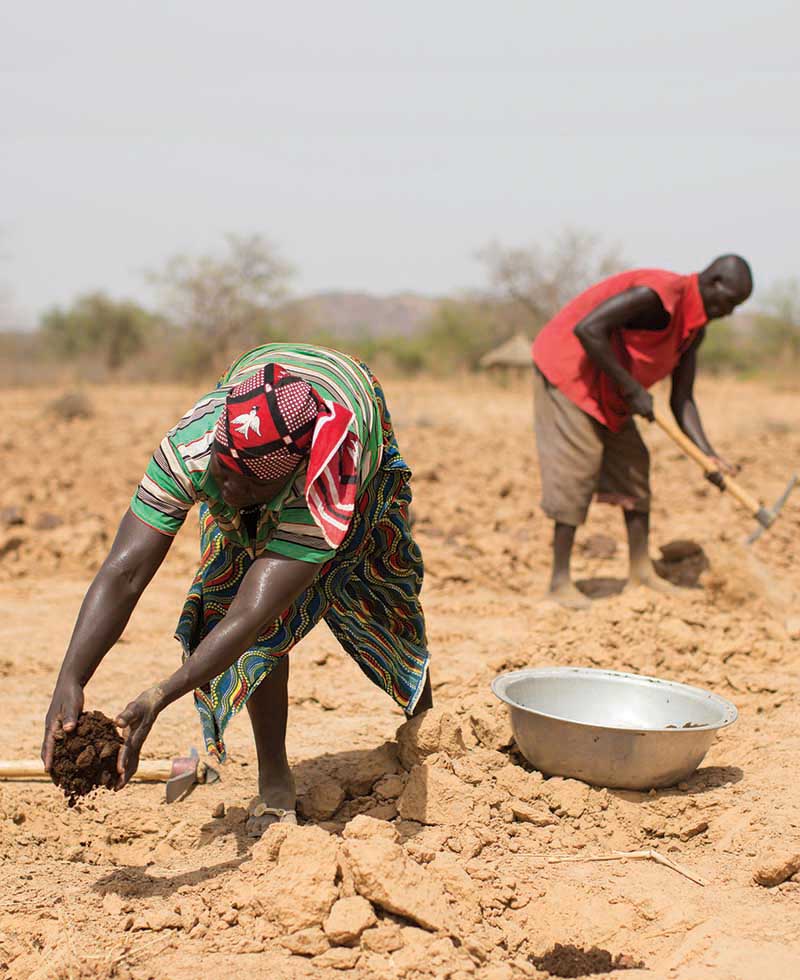
FARMING AGAINST THE DESERT MINATA & BABA - BURKINA FASO
‘Climate-smart agriculture’ might be a new term, but it doesn’t only apply to new technologies coming to the rescue; age-old farming techniques too can play a vital role to play. ‘Zai’ planting has been used in West Africa for over 2,000 years, to ensure crops get the necessary moisture in the searing heat. It’s labour-intensive as individual holes have to be dug for each plant, and these in turn must be filled with compost, so that the nutrients go exactly where they’re needed. The sunken ‘bowl’ of the zai collects and retains what limited water there is when it rains.
Minata and Baba Wedrago from Sika village dig Zai in the 40 ⁰C heat in Burkina Faso. The work is hard, but it also low cost and available to all. In the battle to keep the desert at bay and feed their families, farmers in the Sahel region of West Africa need all the techniques available to them.

PROTECTING THE FORESTS YENDOUKOA - TOGO
Deforestation is a huge problem in rural Africa, where most households rely on wood fuel for their cooking and heating needs. In the arid and semi-arid regions of West Africa on southern edge of the vast Sahara, deforestation takes on added importance as trees and their root systems play a vital defensive role in securing arable land against soil erosion and the increasing encroachment of the desert.
Togolese farmer Yendoukoa Assibi is playing a small but essential role in educating her community about the dangers of deforestation. She has her own domestic woodlot, and is a member of a local womens’ group trained in the fabrication of fuel-efficient mud stoves. The women promote both tree nursery planting and their fuel-stoves, and seek to reduce the rate at which trees are disappearing from the land.
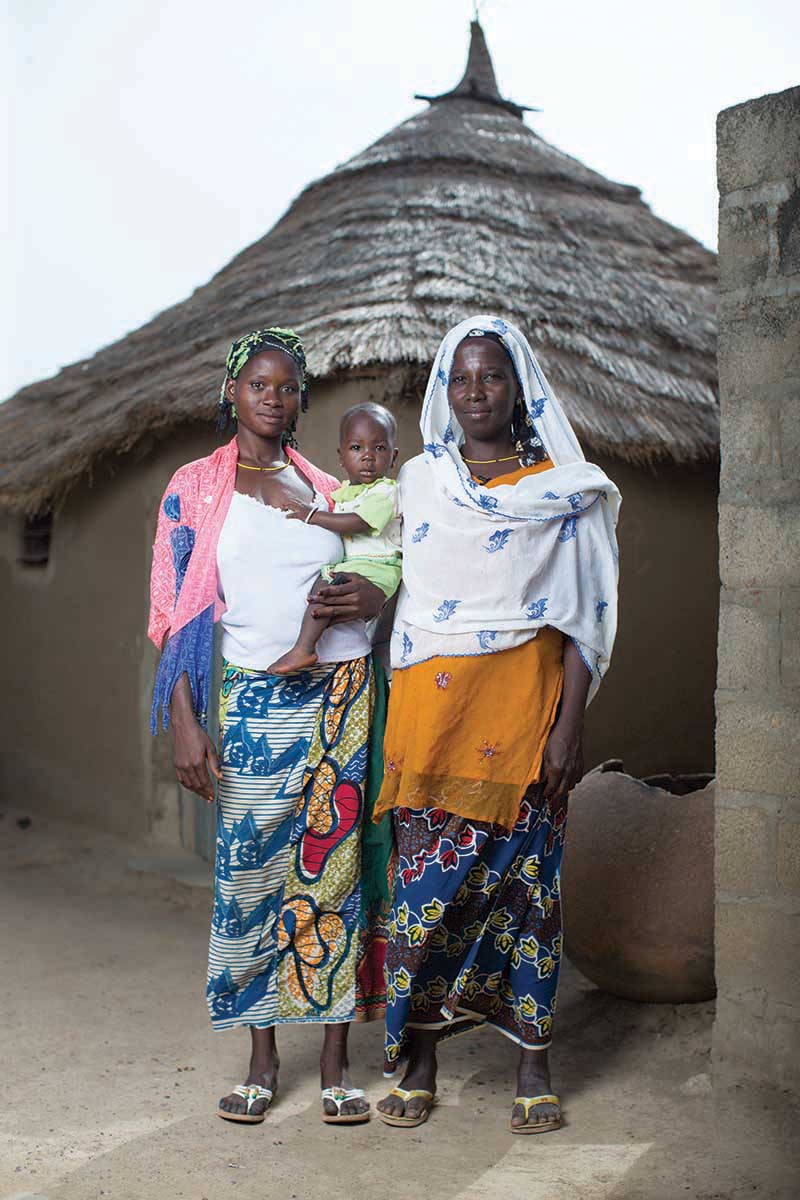
WAITING FOR RAIN YOUGBARE, AISHA & SANA - TOGO
Living on the southern edges of the Sahara, farmers in the arid savannah of northern Togo have little to do during the long dry seasons other than find shade, avoid the stifling heat and wait for rain. Until the arrival of the rainy season, the baked ground is simply too hard to plant in.
In Lipolougou village, where Sana Mamata lives with her daughter-in-law Yougbare and granddaughter Aisha, 30 villagers have banded together to rehabilitate a well and are using the water to irrigate a communal vegetable garden. In doing so they have created one small plot of green in the dusty ground, and provide enough to feed themselves and their families.
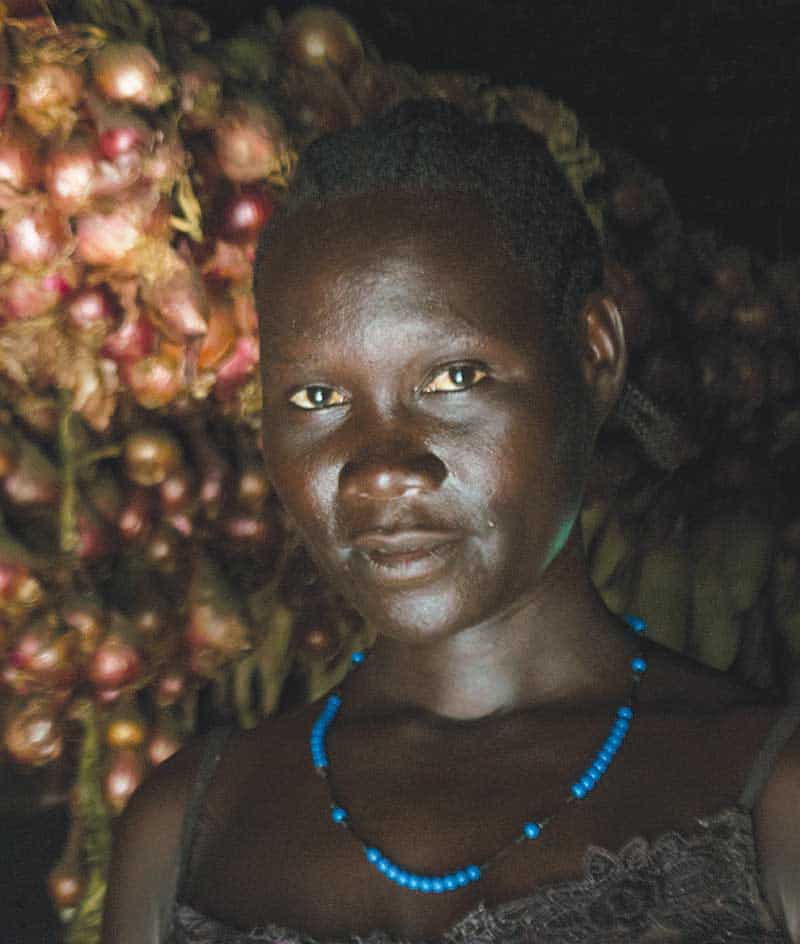
SPREADING THE RISK FLAVIA - UGANDA
Farmers in Africa often produce just one or two crops for most of their nutritional needs. At a time when increasing climatic instability means the traditional seasons are becoming less reliable, this over dependence on a few staples puts entire communities at risk should that crop fail.
Crop diversification and inter-cropping encourage farmers to give themselves additional options. Young mum Flavia Dritchelo follows the age-old adage of not putting all his eggs into one basket by diversifying what she plants. Along side her staple - maize - she now grows onions and other vegetables that she sells to boost her household income. A mix of crops spreads the risk, while it also assists soil fertility, as proper crop rotation can ensure that vital nutrients are replaced in the soil.
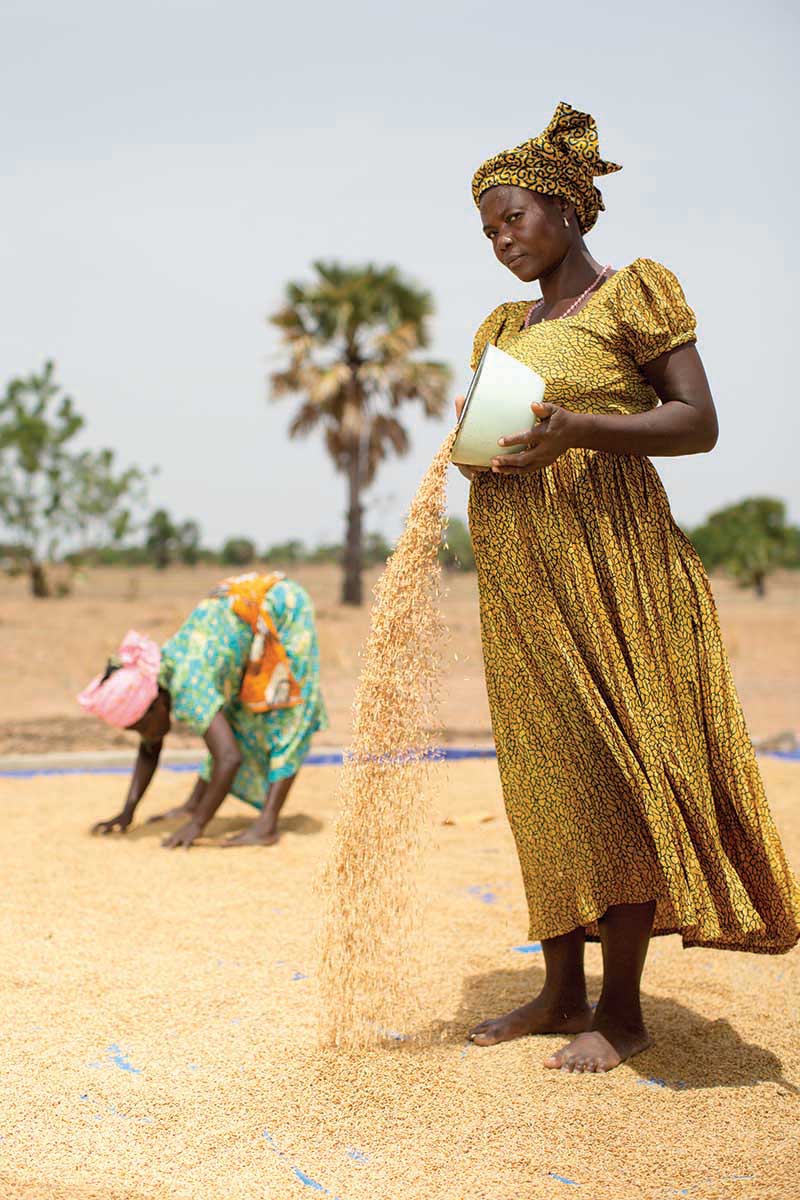
ADDING VALUE SANWOUGOU - TOGO
As changing climate makes it increasingly difficult for Africa’s small-scale farmers to earn a living, Sanwougou Lalle and members of her women’s group in Tonte village, Togo, have turned to an effective, and simple way, to add value to what they grow.
Parboiling the rice that they produce in their fields enables Sanwougou to sun-dry and then remove the outer brown husks from her grain, so that she can trade her processed white rice, which sells at a premium, in nearby towns.
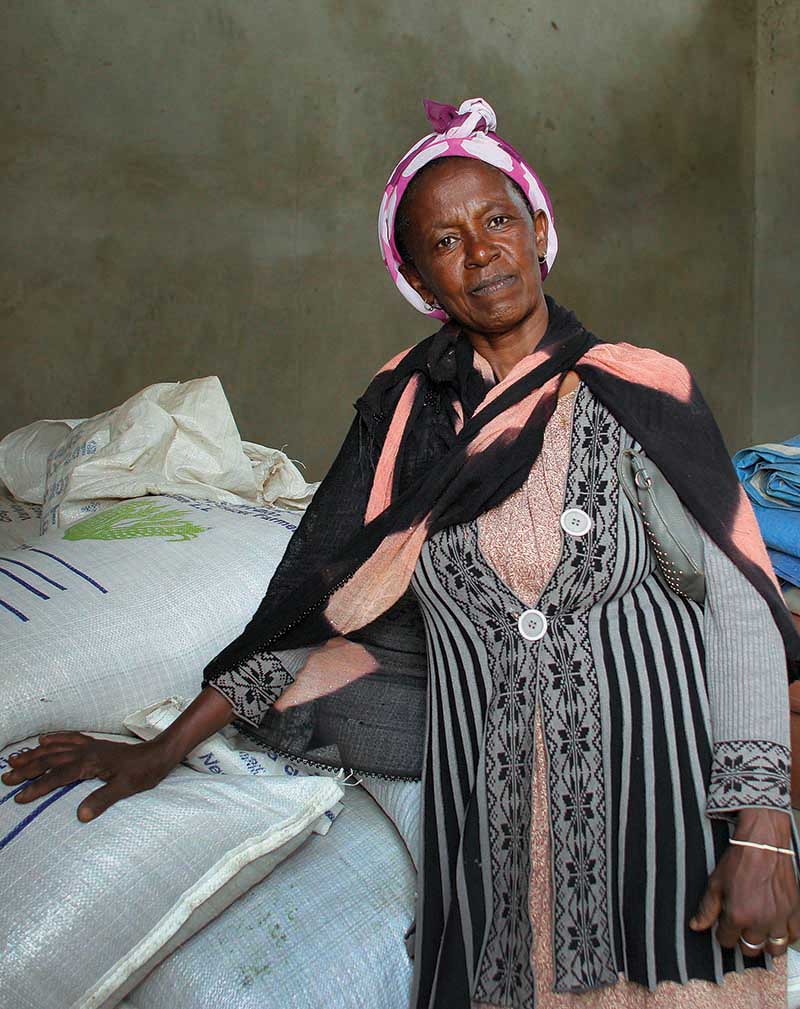
SEED WARRIOR TEGENE - ETHIOPIA
Community-based seed producers like Tegene Kelemow are at the frontline in Ethiopia’s fight against climate change. A seed growing farmer in Wolenchiti village, Tegene also works part-time as the store keeper for her local Wirtu Boset Farmers Cooperative, where members collectively store the drought-tolerant seed varieties that they produce for sale across the region.
‘Drought tolerant’ seed varieties which are developed at research institutes to withstand hotter and drier conditions are being grown and multiplied at community-level by farmers like Tegene, and are sold at planting time to give farmers a better chance of growing in the high temperatures and long dry spells farmers are now experiencing. Early maturing wheat and other (non-GMO) varieties are now being produced locally and can be accessed locally, thanks to community-based seed initiatives like that of Wirtu Boset Cooperative.
Thank you for visiting!
If you have time please answer the following questions.
